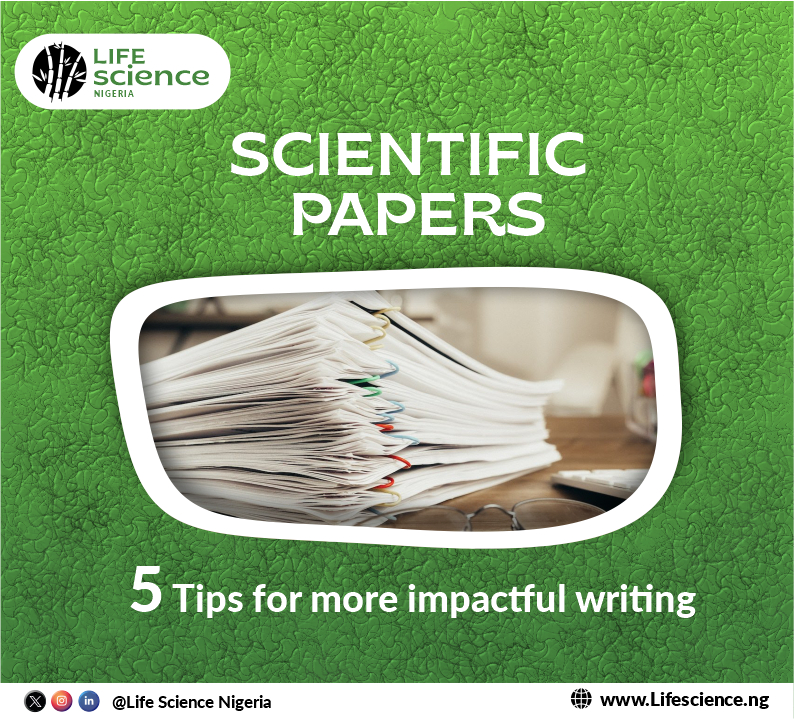
In the academic field, the significance of well-crafted scientific papers cannot be overemphasized. They serve as the bedrock of knowledge dissemination, influencing research trajectories, shaping scientific discourse, and ultimately advancing our understanding of the world. However, amidst the sea of publications, standing out demands more than just data and analysis – it requires masterful writing that captivates, convinces, and compels. So, how can you ensure your scientific paper leaves a lasting impression? Only by making sure you pattern your writing with the best and available tips to maximize the impact of your writing.
What is a Scientific Paper?
A scientific paper provides a detailed overview of research findings, typically following a structured format. It begins with an abstract summarizing the study’s purpose, methods, results, and conclusions. The introduction presents the research context and hypothesis, followed by the methodology section detailing how the study was conducted. Results present the findings, often using tables, figures, and statistical analyses. The discussion interprets the results, considers their implications, and addresses limitations. Finally, the conclusion summarizes key findings and suggests avenues for further research. References cite relevant literature supporting the study’s context and findings. Overall, a scientific paper serves to communicate research findings to the academic community and advance knowledge in the field.
Here are five tips to elevate your writing and maximize impact:
◾Clarity and concise.
◾Structure for success.
◾Craft a compelling narrative.
◾Precision in presentation.
◾Engaging with literature.
1. Clarity and concise: Exceptional scientific writing hinges on clarity. Your aim should be to convey ideas precisely and cohesively, ensuring each sentence contributes meaningfully to the overarching narrative. Avoid using excessive jargon that might alienate readers, instead concise and straightforward language. Break down complex concepts into easily understandable parts, and consider using figures or tables to aid comprehension where necessary. Keep in mind that clarity leads to understanding, which in turn fosters reader engagement. When writing, prioritize expressing yourself clearly to your audience. Begin with simple explanations and gradually introduce more complex ideas as appropriate. Tailor your writing to your readers’ level of expertise, providing explanations for technical terms if needed. The ultimate goal is to make your content accessible and engaging, encouraging readers to follow your ideas and think critically.
2. Structure for Success: A well-structured paper can be related to a well-built house – its foundation solid, its framework sturdy, and its contents organized. Begin with a compelling introduction that outlines the problem statement, articulates the significance of your research, and previews your findings. Follow this with a methodical presentation of methods, results, and discussion, each section flowing seamlessly into the next. Conclude with a succinct summary of key insights and implications. By adhering to a coherent structure, you guide readers through your work with clarity and coherence.
3. Craft Compelling Narratives: Behind every scientific paper lies a story waiting to be told. Infuse your writing with narrative elements that engage the reader on both intellectual and emotional levels. Frame your research within a broader context, highlighting its relevance and potential ramifications. Use anecdotes, analogies, or real-world examples to contextualize complex concepts and humanize your findings. By weaving a compelling narrative thread, you not only elucidate your research but also leave a lasting impression on your audience.
4. Precision in Presentation: In the digital age, attention spans are fleeting, and first impressions are everything. Pay meticulous attention to the presentation of your scientific paper, ensuring it is visually appealing and easy to understand. Choose a clean, professional layout and adhere to journal formatting guidelines rigorously. Utilize headings, subheadings, and bullet points to break up dense text and facilitate skimming. Incorporate relevant visuals such as graphs, charts, or images to elucidate key points. Remember, a polished presentation enhances credibility and invites engagement. For more information explore the principles of writing precise technical communication for scientific research.
5. Engage with Literature: A successful scientific paper does not exist in isolation but rather as part of a broader scholarly conversation. Demonstrate your familiarity with existing literature by integrating relevant references throughout your writing. Situate your research within the context of previous studies, acknowledging both seminal works and recent advancements. Highlight gaps or discrepancies in the literature that your research seeks to address, thereby emphasizing its novelty and significance. By engaging thoughtfully with the existing body of knowledge, you position your work as a meaningful contribution to the field.
In conclusion, the art of writing impactful scientific papers lies at the intersection of clarity, structure, narrative, presentation, and engagement. By embracing these five tips, you can elevate your writing from mere documentation to a transformative force within your discipline. Remember, the true measure of a scientific paper’s impact lies not just in its publication but in its ability to inspire, inform, and catalyze further discovery. So, wield your pen with purpose, and let your words shape the future of science. Your written work serves as a platform to showcase your identity within the scientific community. It is an opportunity to present a scholarly, articulate, and coherent depiction of your interests, concepts, findings, and analyses. The aim shifts from merely publishing a manuscript to publishing an engaging one that stimulates discourse and citation and sparks curiosity and further inquiry due to its inherent clarity and depth of insight to the reader.
ALSO READ, POWERFUL TIPS WHEN CRAFTING YOUR STATEMENT OF PURPOSE FOR LIFE SCIENCE FUNDING APPLICATION.